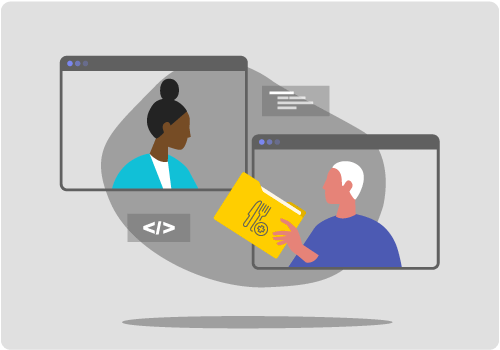Interoperability in Foodservice
Departments with HL7 Interface
What is “Interoperability”?
HIMSS (Healthcare Information and Management Systems Society) defines interoperability in healthcare as “the ability of different information systems, devices and applications (systems) to access, exchange, integrate and cooperatively use data in a coordinated manner, within and across organizational, regional and national boundaries, to provide timely and seamless portability of information and optimize the health of individuals and populations globally.”1
Redundant data entry into multiple systems is not safe, cost-effective, or acceptable. One system or application should be established as the “source of truth” for each data element. All other programs should then utilize interface and other integration processes to populate their databases with this shared data.

How Does HL7 Promote Interoperability in Foodservice Departments?
HL7 stands for Health Level Seven and is composed of standards for data movement between software applications used in healthcare. These standards focus on the application layer, the 7th level of the OSI (Open Systems Interconnection) model. Hospitals have many systems that must communicate with each other, and these data standards help facilitate the means to share sensitive clinical information.
Electronic Health Record systems (EHRs) contain a variety of data concerning patients, from admission date to medication and treatment. Additionally, EHRs possess necessary information for healthcare foodservice, such as allergies. This data can be passed through an interface, like an HL7 interface, and transferred to the foodservice department’s automation system.
Once EHR information carries over to the foodservice system, operators can adjust so that patients receive meals that will not produce reactions or hurt them. These platforms can also receive data related to diet orders, nourishments, supplements, preferences, food likes, food dislikes, special services, etc. What’s more, dynamic updates keep everyone on the same page. For example, consider a patient whose diet order just changed to NPO. If staff does not receive this information in time, the patient may accidentally consume a meal and face a rescheduled surgery or other complications.
Think It Through
Though the HL7 standard includes a substantial amount of the primary health data, much more still needs to be passed between systems. When no HL7 specification exists, software vendors develop a unique API (Application Programming Interface). API development includes custom formats, standards, and applications. When customers want to purchase applications from different vendors that require interoperability, the companies bid to decide which one will develop the application to exchange data between the two systems. Consequently, software vendors wind up in constant, ongoing negotiations.
As you evaluate purchasing new software applications, ask about the vendor’s current and future interoperability features and options. Powerful integrated solutions will enable foodservice staff to ensure they meet patients’ diet requirements while maintaining the utmost efficiency.
1 “Interoperability in Healthcare.” HIMSS, 2022, https://www.himss.org/resources/interoperability-healthcare.